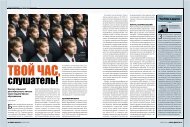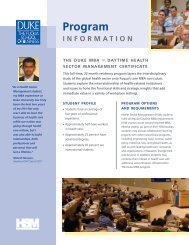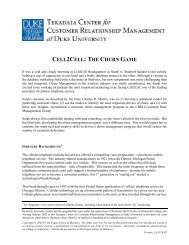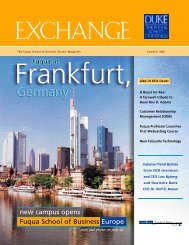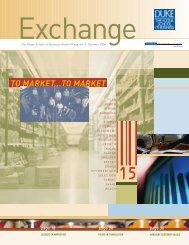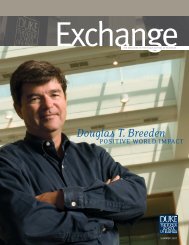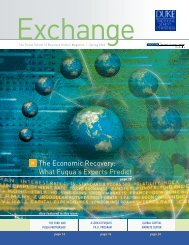Equilibrium Growth, Inflation, and Bond Yields - Duke University's ...
Equilibrium Growth, Inflation, and Bond Yields - Duke University's ...
Equilibrium Growth, Inflation, and Bond Yields - Duke University's ...
You also want an ePaper? Increase the reach of your titles
YUMPU automatically turns print PDFs into web optimized ePapers that Google loves.
the model creates a strong feedback effect between asset prices <strong>and</strong> growth, which amplifies low-frequency<br />
movements in aggregate growth rates, which further increases risk premia. My paper relies on similar<br />
economic mechanisms for generating a sizeable equity premium <strong>and</strong> low riskfree rate. On the other h<strong>and</strong>,<br />
my paper differs from KS by extending these ideas to a nominal economy with imperfect price adjustment.<br />
Specifically, I embed an endogenous growth model of vertical innovations into a st<strong>and</strong>ard New Keynesian<br />
setup. These extensions allow me to study the determination of nominal bond prices jointly with equity<br />
prices <strong>and</strong> also, the implications of monetary policy for both growth <strong>and</strong> asset prices.<br />
More broadly, my paper relates to a number of recent papers that study how long-run risks arise endoge-<br />
nously in general equilibrium production economies. Some examples include Tallarini (2000), Uhlig (2010),<br />
Backus, Routledge, Zin (2010), Croce (2008), Campanale, Castro <strong>and</strong> Clementi (2008), Kaltenbrunner <strong>and</strong><br />
Lochstoer (2008), Kuehn (2008), Ai (2009), <strong>and</strong> Gourio (2010). These papers typically work in versions of<br />
the st<strong>and</strong>ard real business cycle model, where growth is given exogenously. One conclusion from calibrated<br />
versions of these important contributions is that while long-run risks do arise endogenously in such settings,<br />
they are typically not quantitatively sufficient to rationalize key asset market statistics. In contrast, the<br />
endogenous growth paradigm does deliver quantitatively significant endogenous long-run risks through the<br />
R&D <strong>and</strong> innovation decisions of firms.<br />
My paper also relates to the literature examining the term structure of interest rates in general equilib-<br />
rium production-based models. Donaldson, Johnsen <strong>and</strong> Mehra (1990) <strong>and</strong> Den Hann (1995) document that<br />
variants of st<strong>and</strong>ard business cycle models with additively separable preferences have trouble reproducing<br />
the sizeable positive nominal term premium observed in the data. These shortcomings are inherently linked<br />
to the fact that additively separable preferences cannot generate sufficient risk premia. Indeed, Backus,<br />
Gregory <strong>and</strong> Zin (1989) also highlight similar issues in an endowment economy setting.<br />
Wachter (2006) shows that a consumption-based model with habit preferences can explain the nominal<br />
term structure of interest rates. However, Rudebusch <strong>and</strong> Swanson (2008) show that in production-based<br />
model with habit preferences, nominal bond prices can only be reconciled at the expense of distorting the fit<br />
of macroeconomic variables, such as real wages <strong>and</strong> inflation. In contrast, my model can explain the nominal<br />
structure of interest rates, jointly with equity prices, in a production setting while still maintaining a good<br />
fit to a broad set of macroeconomic variables.<br />
van Binsbergen, Fern<strong>and</strong>ez-Villaverde, Koijen <strong>and</strong> Rubio-Ramirez (2010) <strong>and</strong> Rudebusch <strong>and</strong> Swanson<br />
(2010) consider st<strong>and</strong>ard production-based models with recursive preferences <strong>and</strong> highlight the difficulty these<br />
models have in quantitatively explaining the nominal term structure of interest rates with macro aggregates.<br />
In particular, these papers demonstrate that a very large coefficient of relative risk aversion is required to<br />
match to the slope of the nominal yield curve. In contrast, in my model, I explain the slope of the yield<br />
4





